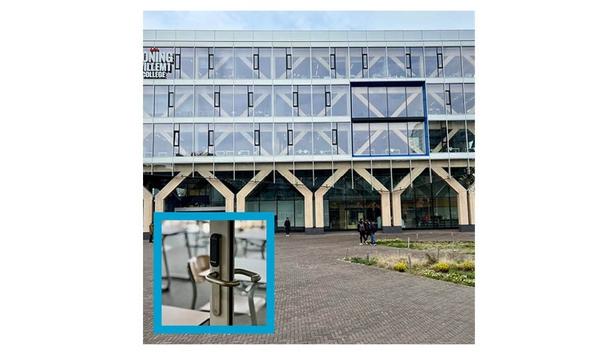Emergencies can seriously disrupt the logistics processes in a port. To prevent major economic impact, good security is crucial.
“We must always know who has access to our buildings, and when. So we’ve fitted all our critical port buildings with access control. We opted for Nedap’s AEOS system back in 2005, because – among other things – we were able to connect our existing fibre optic communication network easily at the time via ethernet. Although the most important functionalities (including access control) can run autonomously if the network’s down, it can be argued that, as long as our fibre optic network is running, AEOS is also running.” Marc de Caluwé, network engineer, Port of Antwerp.
Always in control
It’s a grey autumn morning when the door opens with a loud click and the buzzing noise indicates we can enter. After climbing several steps, we’re welcomed by Marc de Caluwé into a room full of TV screens displaying various images from crucial locations in the port area. Marc explains: “We’re now in the middle of the Antwerp Port Authority’s crisis centre. In general, we monitor all our systems at each location in the port here, constantly. Notifications from the various systems come straight here to the crisis centre, from camera images and radar information to access reports and gas or fire alarms. If a building needs to be evacuated because of an emergency in the port, for example, it’s from this centre that emergency response and traffic are directed. This is of major importance, because if cargo ships can’t unload and their cargo can’t be transshipped onto lorries, barges and freight trains, it could have major economic consequences. That’s why it’s crucially important that we always maintain control. Having our own 150km long fibre optic network helps. We make sure our network infrastructure is always in order, so the flow of goods over the physical infrastructure - roads, water and rail - is never in jeopardy.”
Scaling back the key plan
“Our port area covers approximately 130 square kilometres and there are 47 building complexes under the port’s management. Imagine having to follow a key plan and provide a key for each building and to everyone who has access – it’s not easy and certainly not cheap. Our goal for the coming years is to scale back the key plans for all the port complexes we manage. At the data centre, for example, there are currently only four people with a physical key. Other people with access rights can only enter using a card. We’re already noticing that this highly simplified key plan saves time and money.”
When asked how access to the buildings is currently arranged, Marc answers: “There are more than 3000 cards in use for all the port buildings under our management. To ensure external parties, such as ship personnel, can gain access to the locations they need, we provide Alfapasses. We can also grant access via AEOS to anyone with a valid Alfapass because AEOS is Alfapass compatible. Allocation of these rights is easy, and is carried out by the people in our department who regularly receive an overview of who has access to which buildings and zones. This enables them to identify irregularities quickly and make adjustments to keep things safe.”
"We’re going to look carefully at |
Redundant platform
The next step in Marc’s hospitable tour takes us to one of the port authority’s two data centres, the entrances to which are also secured by AEOS. “The data centres are the heart of the port; from here, we ensure that the fibre optic network is always up-to-date. It goes without saying that people who don’t have any business here can’t come in. All the servers – almost all of which are virtualised – are located in the two data centres. The advantage of this is that you can move the servers from one centre to the other, while they continue to be operational. Nedap’s system also runs on a virtualised server, which in turn runs on a redundant virtual platform. This ensures that we never lose data and are always properly secured.”
Ready for the future
When asked about future plans, Marc says: “We’re currently working on the ‘Nieuw Havenhuis’ project, a new office with room for 550 people to work, where we’ll also be running AEOS access control. This is a logical choice; we started with a couple of doors in 2005, and as the years went on we added doors at a rapid rate.
AEOS is easy to expand. You order the components you need, and install them. And it works straightaway. As it’s an open source system, we can easily program small things ourselves if necessary. We are also considering making more efficient combinations. We’re thinking about linking access control to the cameras via AEOS, so they automatically turn to face the location where a card is being presented. And we’re going to look carefully at the integration of lift control, intercom systems, intrusion detection and remote monitoring in AEOS. We know that the system can handle all of this, and we’re ready for the future.”

















